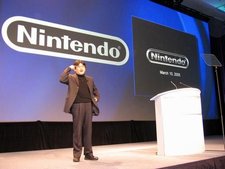 It doesn’t take much of a search of the Infendo archives to discover where I stand on big, bloated blockbuster titles like Halo 3 or Metal Gear Solid 4.
It doesn’t take much of a search of the Infendo archives to discover where I stand on big, bloated blockbuster titles like Halo 3 or Metal Gear Solid 4.
To summarize, I think they’re pretty much the worst thing to happen to gaming since the Virtual Boy.
This isn’t to say these games aren’t good or going to be good, not in the least. Halo 3 was an great addition to the series and I’d be insane to state otherwise. Grand Theft Auto 3 was pretty much on autopilot for most of my college career, and I own the collector’s CD set for Vice City because, well, it’s the cat’s pajamas.
It’s just that, well, from here on out hardcore AAA $20 million titles will be good but not good enough.
Helping me out today will be Bruce Everiss over at Seeking Alpha. He compiled a pretty good list about this topic in a post today.
The gold standard in the games industry is currently the AAA blockbuster console title. An investment of perhaps $10-20 million or even more from a big publisher on a big team over a couple of years. The global marketing costs run into the millions as well. The result is games like Grand Theft Auto, Halo and Assassin’s Creed, all well crafted global best sellers. They can make a lot of money, but often they don’t.
Basically, as the video game industry continues to mature, which it will, hardcore games will increasingly be attributed to hardcore losses.
Why? First off, the cost. There’s a reason two out of the three systems on the market today have games that cost $60+, but then again there is also no good reason why they should cost that much. Many people believe video games should be more in line with movies, which cost much, much more than a game to produce, market and distribute. Can anyone out there tell me why the Waterworld DVD, when it came out, was only about $20, when it cost more than $200 million to make? Now, on the other hand, how much did it take to do the same with Halo 3? Even with all that silly Gamer Fuel and YouTube viral wartime video stuff (which was pretty interesting, by the way), the two numbers don’t really compare. As the audience expands the price point will stabilize. $50 is good, but why not lower?
Unfortunately for that point, it may be too late to change pricing in any significant way; already when a $20 game hits shelves it’s automatically labeled cheap or “a rental” not because of quality, but on price alone (Link’s super inexpensive $20 Crossbow Training was reviewed positively, etc).
Also related to cost is the fact that when compared to the movie industry, the video game gurus have it ass-backwards. In movies, a studio will create a blockbuster, sure, and pump millions upon millions into it, yes, but they will also make sure that this kind of movie appeals to the widest audience possible. Spiderman, Mission Impossible, Harry Potter — these are all based upon niches from other industries (comics, TV and fantasy books, respectively), but they have been watered down, adapted and polished in such a way that they will appeal to men, women, boys and girls, while still maintaining some of the essence of what made them popular with their original fans. In gaming, this dynamic is on its head. The niche gets the millions while the cas-core gets the shaft.
Second, the development cycle itself. In what has become yet another hypocritical trend in an industry now ripe with them, people have taken to attacking certain systems for having a lack of quality games while at the same time they will gladly turn a blind eye to the fact that we really only get one or two top quality AAA blockbuster hardcore titles per year. And even then, it’s “top quality” to who, exactly?
Third, the one/two game AAA game a year trend means that both developer attention and media attention are now tied to a handful of points throughout the year. When those points do arrive, we’re often left scratching our heads as to why we and the media gave these games and their events so much attention. Please see: Halo 3 megalaunch events. When this happens, we often lose sight of those indie projects or AA titles that are the legitimate “best games of the year” but never receive the attention they deserve. Who knows? Maybe when CAPCOM told everyone that they did market Zack & Wiki they were telling the truth. Maybe it was just that the media was too focused — or was trained like little lapdogs to focus — on some AAA title due out *maybe* Q4 of 2008. Another side effect of this trend is that we’re positively surprised out of our socks when a game does well in a month like August (Strikers Charged) or March (inevitably, Smash Bros. Brawl). I, for one, welcome buying games at times other than Xmas.
That’s a pretty pessimistic little diatribe I have up up there, but I think there’s hope because money trumps everything.
Said Everiss:
But now the winds of change are blowing through the industry. Nintendo, casual gaming, free MMOs, handhelds, social networking. All of these, and more, are changing the way the public look at games. The industry, eventually, will have to follow the customer.
Quite simply, a publisher will find that they can get a better return with less risk by not doing traditional AAA blockbusters. They will see that they can use their finance and development resources in ways that are better for their business.
The film industry learned this a long, long time ago. If you are going to invest a lot of money in a film make sure it appeals to a very wide audience. Don’t spend the big money on art house movies. We will follow suit and the current generation of AAA titles will be looked back at as an anomalous growing pain of the video gaming industry… and less aliens will be shot.
It’s simple math really. When a $20 million dollar game doesn’t sell 5 million copies like it might have 3-5 years ago, publishers will stop making as many of them, or, please oh please, they’ll start to create AAA multi-million dollar games for a wider audience. This isn’t to say mature titles should or will die out, but they will certainly assume their rightful place in the indie section where they belong.
Everiss’ list:
It could be argued that these games are actually a big part of what is wrong with the games industry:
* They use up a disproportionate amount of the available development talent and finance.
* They hold the focus of the media when, in fact, there is a lot more going on that doesn’t get the media attention it deserves.
* They usually only appeal to a narrow demographic, thwarting the wider acceptance of gaming.
* They are usually difficult and are inaccessible for a non gamer to get into.
* Their genres and subject material are usually limited and intellectually and emotionally stunted. Let’s make another alien shooting game.
* They are far, far too expensive for customers to buy. A factor of their high development costs, their limited appeal, their high risk and the large slice the platform holders take out of each one. Most games would still be too expensive at half the price.
* They use the limiting distribution model of cardboard and plastic.
* Usually they have no room for user generated and/or episodic content.
Now, what better place to build, market and profit from a multi-million dollar AAA title than a console that boasts the most diverse audience on the planet right now?

